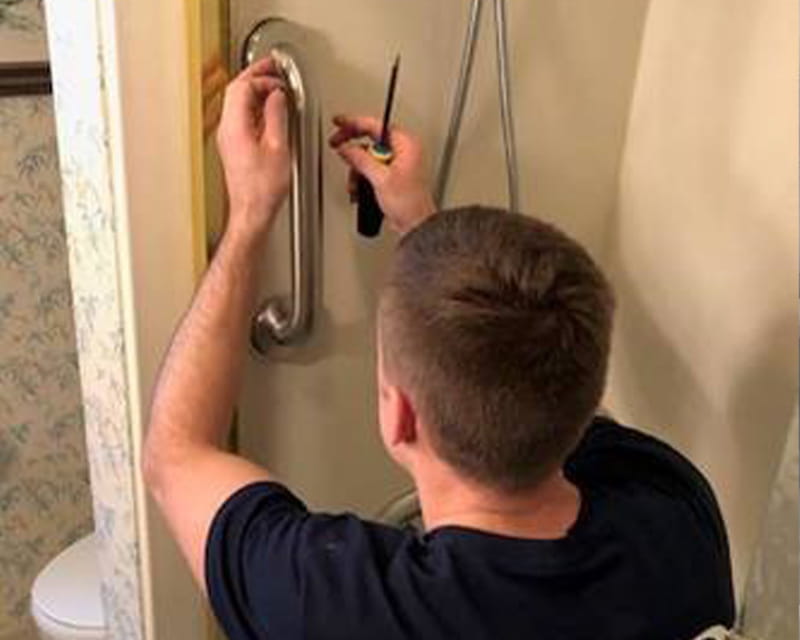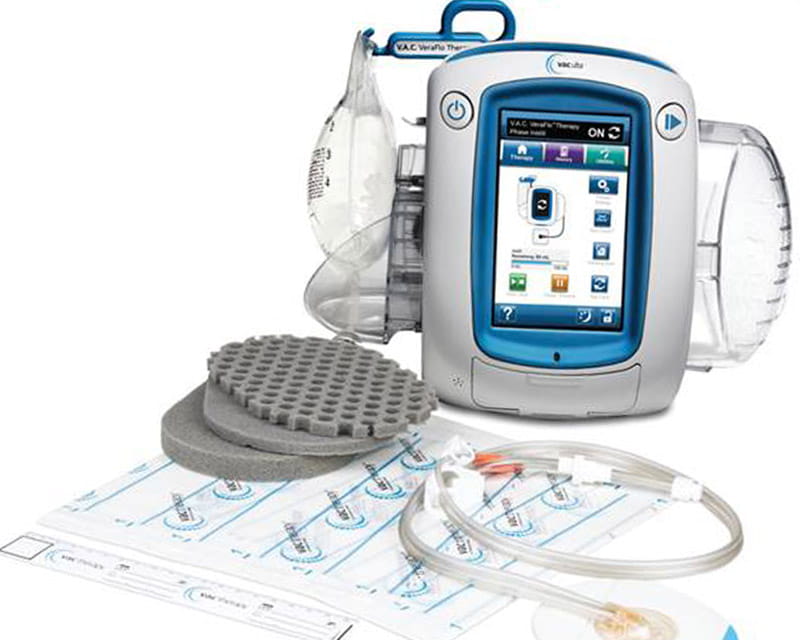
improving patient care
 While infection treatment may be a relatively simple and routine procedure for some physicians, tackling serious musculoskeletal infections is a different challenge altogether. In many cases, these infections need to be treated with more complicated and intensive therapies.
While infection treatment may be a relatively simple and routine procedure for some physicians, tackling serious musculoskeletal infections is a different challenge altogether. In many cases, these infections need to be treated with more complicated and intensive therapies.
Thanks to some recent developments in wound care products, a treatment led by Ohio State orthopaedic surgeon Anne Sullivan, MD, has helped many patients with serious infections. The treatment — known as negative-pressure wound therapy with instillation — can make a huge difference for patients with complications from orthopedic implants or injuries.
“We get patients from time to time who have complex, long-standing infections — many of whom have been treated in other places — and they require special wound care,” Dr. Sullivan says. “This novel therapy has really grown out of necessity.”
The new treatment stemmed out of an existing treatment called negative-pressure wound therapy. This treatment, also known as a wound VAC, uses a device to apply suction to the tissues around the wound, which controls drainage, decreases swelling and helps the wound heal more quickly.
With the new therapy, orthopaedic teams use a special type of wound VAC that periodically irrigates the wound with antiseptic solution or saline. This helps clean up the wound and fight any infectious material that may be left behind after surgeons initially remove damaged tissue (debridement). The treatment also helps better prepare the wound for closure.
This new treatment has been used in Europe for roughly 10 years, but it is gaining popularity in the U.S. Dr. Sullivan has been using the technique at Ohio State for about two years.
“This treatment can be done for large or small wounds, whether they’re deep or superficial — really any wound where you’re concerned about residual infection,” Dr. Sullivan says. “It decreases the bacteria in the wound, improves the quality of the tissue, and decreases the amount of debris and dead material.”
The negative-pressure wound therapy with instillation is an inpatient procedure that can take several days or a week to complete. The amount of time needed depends on wound location and type, and the severity of the infection.
Dr. Sullivan says she often uses this treatment on patients who develop infections after receiving an orthopedic implant, such as hip and knee replacements. It can be initiated while the patient is in the operating room during surgery, or at the bedside while they are in the hospital awaiting further surgery.
The instillation treatment is also useful before putting an antibiotic spacer in a wound, Dr. Sullivan says. Antibiotic spacers are typically left in a joint (such as a hip) for a number of weeks to deliver a high dose of antibiotics over time. Using the instillation first theoretically improves the success of the antibiotic treatment.
Currently, the instillation treatment is being done on an “as-needed basis,” Dr. Sullivan says, but her team would like to start dedicating time to studying the therapy closely and setting up research protocols.
“Right now, the benefits to this treatment are theoretical — we see that it helps the wound and improves tissue quality, but we don’t have research protocols looking at it closely,” Dr. Sullivan says. “We’re hoping that with more research, we can optimize the treatment and better identify patients who will benefit the most from it.”